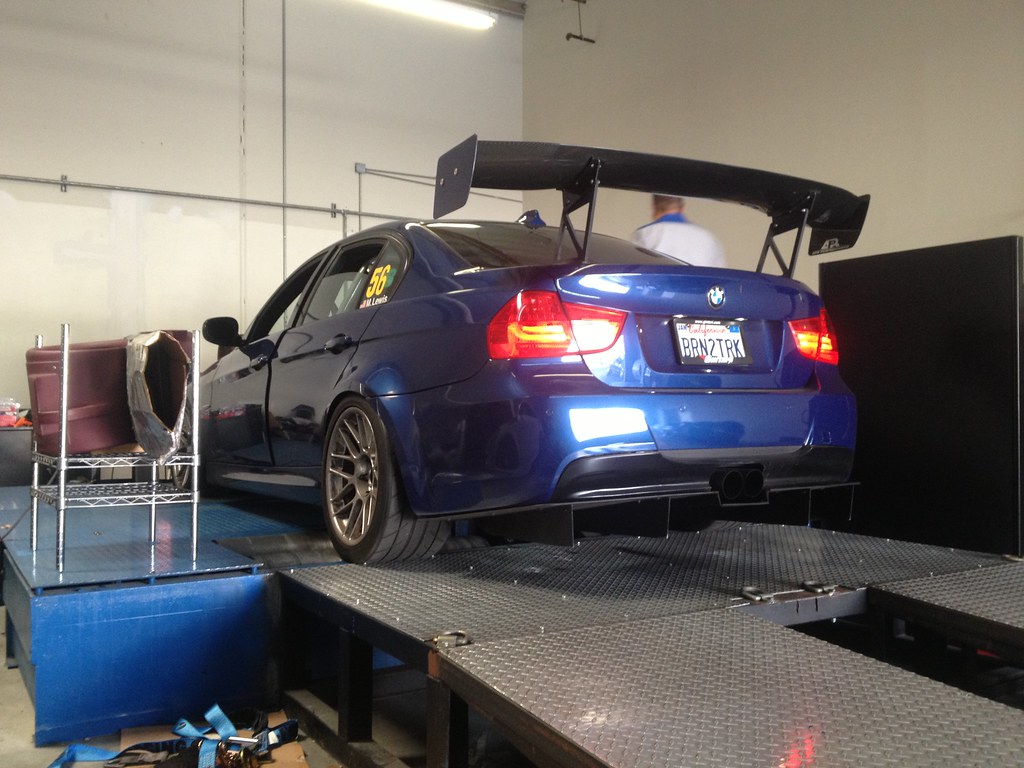The time has come for me to take my beloved 335 up to the bay this weekend and drop her off at Tony's establishment for a lung transplant. I have been in constant contact with Tony and he has been nothing but a PLEASURE to deal with; quick responses, knowledgable information, and a willingness to meet me on the weekend to accommodate my schedule. I will be up in San Francisco for the regional BMW CCA conference because I was just elected to the board as the "Activities Chair."

I will be letting everyone know about upcoming events!
Anyways, before dropping off my car I reminded myself that you forum type LOVE your numbers. So I contacted Thomas @ GIAC and quickly scheduled a couple dyno pulls for early in the week. This way, we have a clear idea of the delta net gains (WHICH ARE THE MOST IMPORTANT NUMBERS) of the Vargas after the installation and tune. While I was at GIAC, I met with Andrew Ciraulo, the brains behind N54 tuning and numerous RWD track records from Berk, HPA, and Evolution Racewerks. The guy is a genius and was kind enough to explain how the tune works compared with piggys and other such modifications. He explained that I might see relatively low numbers at their "new" facility for a number of reasons. 1) Mustang Dynos always read lower than dynojets 2) This will be a loaded run, compensating a set of variables and pressure applied to the calculations (so numbers might be scewed 10whp or so) and 3) the dyno room was literally 60 degrees. You might think that 60 degree whether would be an ideal condition, but Andrew explained that a tune, such as GIAC, works in a fashion that monitors IATs and regulates boost accordingly. If the tune can make the same 'target power' with less boost in colder conditions, than you won't see peak boost. It is a conditional protocol that makes for a smoother and more stable drive (which is what ecu flashes are known for). This is why I saw my numbers jump 5whp every single pull we did. The ecu was getting acclimated to its surroundings.
I'm sorry that the explanation sounded more like an excuse, but I just wanted to preface the numbers. I do not have my previous dyno records but these are the results...
Previous DynoJet:
420whp (with 110oct)
430lbs-ft
GIAC Mustang Dyno:
377whp (corrected around 410whp)
404lbs-ft (corrected around 430lbs-ft)
^^^^^In warmer temperatures I would have seen even higher numbers, probably around 420 & 440...
VIDEO:
PICTURES:


Had to remove the rear diffusor to hook up the cables, lol.

My previous DynoJet pull was also on race gas + 50/50 meth. The GIAC run was on 91/e85 at a 50/50 mixture.
Bottom line is that there are SOOOOO many factors in calculating dyno numbers. Some dynos read a lot less than others. Tunes have to get acclimated to different weather situations, not just 2 pulls on a dyno, but constant WOT and abuse. I have smoked e60 M5s, 500awhp subi's and many others, so I really don't care if people think the numbers are low.
Andrew will be offering his "general" tune for the RB/Vargas setup, as well as a custom "one off" super aggressive tune for myself. He will set a target boost instead of a target power, so I will always hit boost no matter what temp (due to my insane cooling modifications). I will be posting both results in around 2 weeks.
I am super excited about the hybrids and I will, hopefully, be the first to post results!!! Stay tuned and subscribe!!!!!